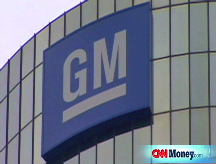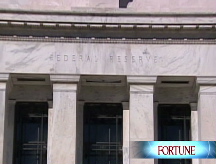How to spend $350 billion in 77 days
In two-and-a-half months, the Treasury has used up half of the money from the Troubled Asset Relief Program. Here's how it came and went so fast.
NEW YORK (CNNMoney.com) -- President Bush has grudgingly allowed General Motors and Chrysler to drive away with the last few billion bucks in Treasury's TARP till, which boasted $350 billion a mere 77 days ago.
How did it all slip away so fast?
The money pot -- intended to save the teetering financial system -- was formally proposed in a three-page missive that Treasury sent to Congress on the morning of Saturday, Sept. 20.
Over the course of two weeks, lawmakers debated the potential moral, ethical and financial hazards of handing over unprecedented power and unprecedented sums of taxpayer money to the Treasury. Their responses ranged from gobsmacked to apoplectic.
By Friday, Oct. 3, Congress had passed a 451-page bill that President Bush signed into law within hours. The law granted Treasury up to $700 billion, half of which was made available right away.
Since then, Treasury has:
- sent checks totaling $168 billion in varying amounts to 116 banks;
- committed another $82 billion to capitalize more banks;
- bought $40 billion in preferred shares of American International Group (AIG, Fortune 500) so the troubled insurer could pay off an earlier loan from the Federal Reserve;
- committed $20 billion to back any losses that the Federal Reserve Bank of New York might incur in a new program to lend money to owners of securities backed by credit card debt, student loans, auto loans and small business loans;
- committed to invest $20 billion in Citigroup on top of $25 billion the bank had already received;
- committed $5 billion as a loan loss backstop to Citigroup;
- agreed to loan $13.4 billion to GM and Chrysler to get them through the next few months.
Now, it's likely that Treasury will ask for the second tranche of $350 billion.
"It's clear Congress will need to release the remainder of the TARP to support financial market stability," Treasury Secretary Henry Paulson said Friday. "I will discuss that process with the congressional leadership and the president-elect's transition team in the near future."
It's not clear, however, whether Paulson will formally ask Congress for the second tranche of TARP money before turning over the keys of the Treasury to his likely successor, Tim Geithner.
Even if Paulson wants to, however, he's likely to face an uphill battle getting it.
"It seems very unlikely that Congress will give the final TARP installment to the Bush administration," said Jaret Seiberg, a financial services analyst at policy research firm Stanford Group.
That's because the apoplexy among those who originally opposed the TARP or who voted for it reluctantly has grown and spread for several reasons.
One cause of Capitol Hill's bailout rage: the Treasury has not used TARP money to help prevent foreclosures. Democratic lawmakers, who crafted the legislation and purposefully included language about foreclosure prevention, beg to differ. They have said repeatedly they will not release any more TARP money until the Treasury commits to use some of it to help troubled homeowners.
Second, lawmakers are not happy Treasury has given so much capital to banks without requiring them to lend more and do more to oversee how the banks are using the money. Paulson has said Treasury told TARP recipients that it expects them to lend. "But it's not practical or prudent for the government to say 'make this loan, don't make that loan,'" he said Thursday, speaking at an event in New York.
And third, Republicans in particular resent what they see as TARP mission creep. House Minority Leader John Boehner, R-Ohio, was one of many who opposed the auto bailout, and the fact that TARP was the source of the bridge loans in particular.
"The use of TARP funds is also regrettable, the latest in a growing list of TARP money uses that were not discussed with or envisioned by Congress when the program was authorized," Boehner said Friday.
House Speaker Nancy Pelosi, D-Calif., has said she is working on a bill to add more guarantees that future TARP funds be used to prevent foreclosures and protect taxpayers. But it's not clear yet how much Democratic support that will get. And there is near total Republican opposition in the House to approve any more TARP funding.
If that remains the case, the Obama team will have to add yet another entry to its ever-growing to-do list when they take power on Jan. 20.
- CNN congressional producer Deirdre Walsh contributed to this report. ![]()




